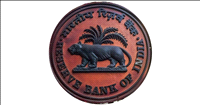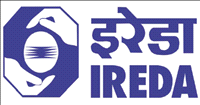Discarding paperwork
By T Radhakrishna | 14 Nov 2002
 Hyderabad: A small CD, containing 357 documents, placed next to a voluminous leather-bound 117-year-old book containing records of 390 documents registered in 1883 at the sub-registrar’s office in Madanapalli, a small dusty town in Andhra Pradesh, says it all.
Hyderabad: A small CD, containing 357 documents, placed next to a voluminous leather-bound 117-year-old book containing records of 390 documents registered in 1883 at the sub-registrar’s office in Madanapalli, a small dusty town in Andhra Pradesh, says it all. Information technology (IT) is changing the age-old procedures involved in the registration of land and property deeds. The Computer-aided Administration of Registration Department (CARD) of the Andhra Pradesh government has shown how IT can be effectively used in the administration to boost efficiency.
By facilitating electronic delivery of registration services, the project has helped the registration and stamps department to eliminate most of the maladies of the conventional registration system. After three years from the launch of the project, about 90 per cent of all land registrations are done electronically. Not a small achievement.
 The time required for services such as valuation of property, sale of stamp paper, and provision of certified copies of registered documents has come down drastically. Encumbrance certificates are now issued in five minutes, using a system that searches through more than 15 years of records. Though initial hiccups are there while adopting a new system, they are expected to come over soon.
The time required for services such as valuation of property, sale of stamp paper, and provision of certified copies of registered documents has come down drastically. Encumbrance certificates are now issued in five minutes, using a system that searches through more than 15 years of records. Though initial hiccups are there while adopting a new system, they are expected to come over soon.
Proficient role
“The role of IT is changing from support functions to that of an efficiency driver,” says Andhra Pradesh IT secretary J Satyanarayana, the brain behind the project. “The registration process has become almost paperless. As information is made instantly available, the time taken for registration has come down to less than an hour from a few weeks.”
|
|
The main objective of CARD, which is one of the many e-government initiatives of the Andhra Pradesh government, is to apply IT solutions to cut down the time taken in the registration of land and property deeds. “The project has improved the department’s functional efficiency. It is also expected to cut down the expenditures of the department,” says N C Nagarjuna Reddy, an officer on special duty for CARD.
The manual registration system is a long-winding process, involving copying, indexing and retrieving of documents, and is prone to errors and manipulations. The system also requires tedious back-office efforts for preserving documents.
Though the department is not treating the project as a cost-cutting measure, it believes that faster delivery, consistency, reliability and transparency will lead to higher revenue generation. Andhra Pradesh has 387 sub-registrar offices (SROs) which register approximately 12 lakh documents a year.
Meticulous work Twenty-eight district registrars, six deputy inspectors and one inspector general supervise the functioning of these SROs. In the first phase, which was launched in November 1999, CARD was implemented in 214 SROs. The second phase, which is currently under way, will cover another 25 offices.
Twenty-eight district registrars, six deputy inspectors and one inspector general supervise the functioning of these SROs. In the first phase, which was launched in November 1999, CARD was implemented in 214 SROs. The second phase, which is currently under way, will cover another 25 offices.
The project is beginning to yield results. Following the implementation of CARD, the department has achieved a net revenue growth rate of 19.75 per cent in 2000 as against 3.83 per cent in 1996. “We are able to increase the number of registrations per day, which enable us to enhance our revenue. Without IT, we could have not achieved this,” says Reddy.
During 2000-01, the department made 8,96,816 registrations of lands and generated Rs 257.4 crore in the first quarter of 2001 as against its target of Rs 990 crore. Encouraged by the success, the department is now planning to network all the servers and PCs at the SROs using the Andhra Pradesh Wide Area Network, which is built on the bandwidth of the department of telecommunications.
Implementing an IT project involving over 200 locations across the state is not an easy task. The project was divided into nine major tasks and 64 subtasks. About 2,000 hardware items (1,200 Pentium II & III systems with 40 Gb RAM, 300 units of UPS with 3KV capacity and 250 servers, including a few Oracle8) were procured through the nodal agency of AP Technology Services. National Informatics Centre (NIC) developed the software for the project.
Cost efficient Personnel of the department were trained by NIIT on the use of the application at a cost of Rs 12.84 crore. Seventy-five data processing officers were trained for six months and 1,200 data entry operators went through a two-week training. NIC technical director K L Narsing Rao says the project initially faced many challenges in building up basic value data and EC data for the last 15 years.
Personnel of the department were trained by NIIT on the use of the application at a cost of Rs 12.84 crore. Seventy-five data processing officers were trained for six months and 1,200 data entry operators went through a two-week training. NIC technical director K L Narsing Rao says the project initially faced many challenges in building up basic value data and EC data for the last 15 years.
The basic value data consisted of about 50,000 records at each sub-registrar office. According to officials, the task of entering EC data — about 12 lakh records of 2 KB each — was outsourced from five agencies in March 1998.
NIC has so far developed seven versions of the software. “We have not gone in for any branded software as they are expensive. Instead, we have opted for customised software,” says Reddy. "Though there hasn’t been any major interruptions so far, we have experienced breakdown for two days due to technical errors in the past two years. We are now trying to cut down this to a few hours.”
The project was funded entirely by the state government. The 1996 pilot project to computerise two sub-registrar offices cost the government about Rs 26.95 lakh. The original outlay for the full CARD project was about Rs 14.7 crore and it is likely to go up to Rs 21.07 crore.
The transition from a manual to an electronic process required changes in a number of established work procedures. The department had to go through a process of reengineering to meet the new challenges. A transition of this kind will require a huge one-time effort as well as continuous monitoring. One reason for CARD’s success was that it skirted the contentious issue of pricing, says Ajay Sahwney, special secretary for IT in Andhra Pradesh.
Though the department spends Rs 2 crore every year in project maintenance, it expects to recover the money. In the short term, CARD has been a net fiscal loss for the government. But officials are hoping that the public will be willing to pay a reasonable premium for improved services.
The writer can be contacted at tradhakrishna@hotmail.com






























